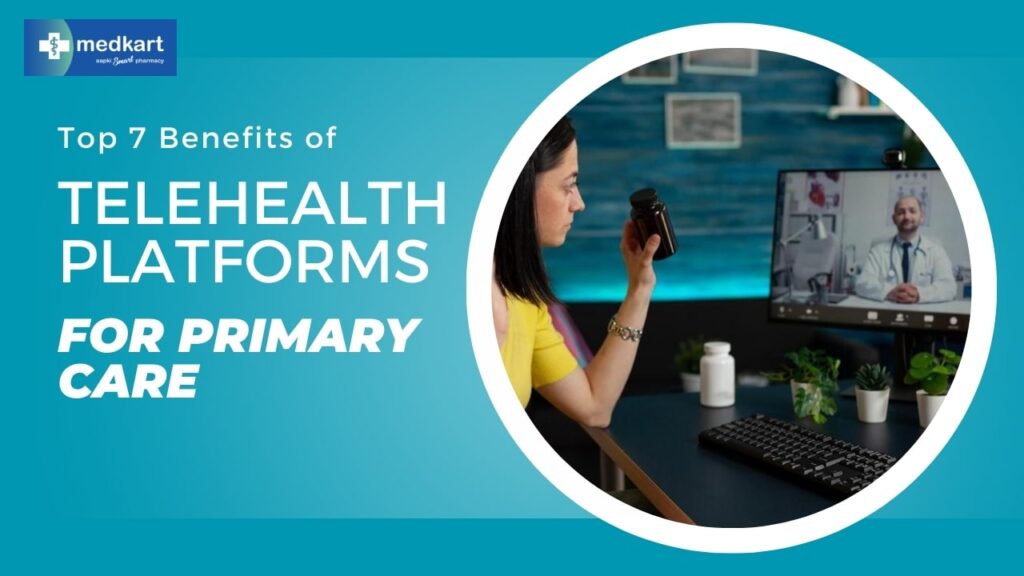Last updated on April 11th, 2025 at 01:53 pm
 Telehealth platforms represent a revolutionary advancement in the field of healthcare delivery, leveraging technology to facilitate remote access to medical services and information. At its core, telehealth encompasses a broad spectrum of services, ranging from virtual consultations with healthcare providers to remote monitoring of patient’s vital signs and symptoms.
Telehealth platforms represent a revolutionary advancement in the field of healthcare delivery, leveraging technology to facilitate remote access to medical services and information. At its core, telehealth encompasses a broad spectrum of services, ranging from virtual consultations with healthcare providers to remote monitoring of patient’s vital signs and symptoms.
These platforms utilize various forms of communication technology, including video conferencing, mobile apps, secure messaging, and wearable devices, to connect patients with healthcare professionals. By transcending geographical barriers and overcoming traditional constraints associated with in-person healthcare visits, telehealth platforms offer unprecedented convenience and accessibility to individuals seeking medical care.
All About Telehealth Platforms
Telehealth platforms encompass a wide range of healthcare services, including primary care consultations, specialist referrals, mental health counseling, chronic disease management, medication management, and preventive care services. Patients can seek medical advice, receive diagnoses, discuss treatment options, and obtain prescriptions—all from the comfort of their homes or any location with internet access.
The components of a typical telehealth platform often include:
1. Virtual Consultations
Patients can schedule appointments and conduct live video consultations with healthcare providers, replicating the experience of an in-person visit.
2. Remote Monitoring
Telehealth platforms enable the continuous monitoring of patients’ health parameters, such as blood pressure, blood glucose levels, heart rate, and activity levels, through connected devices and wearables. This allows healthcare providers to track patients’ progress remotely and intervene promptly if necessary.
3. Secure Communication
To ensure patient privacy and data security, telehealth platforms employ encrypted communication channels and adhere to strict regulatory standards, such as the Health Insurance Portability and Accountability Act (HIPAA) in the United States.
4. Electronic Health Records (EHR) Integration
Integration with electronic health record systems enables seamless documentation and sharing of patient information between healthcare providers, ensuring continuity of care.
5. Patient Portals
Patients can access their medical records, view test results, schedule appointments, and communicate with their healthcare team through secure online portals or mobile applications.
Telehealth platforms offer numerous benefits to both patients and healthcare providers. Patients enjoy increased convenience, reduced travel time and expenses, timely access to care, and improved engagement in their healthcare journey. Healthcare providers benefit from enhanced efficiency, expanded reach, better patient outcomes, and reduced administrative burden.
As technology continues to evolve and telehealth adoption grows, telehealth platforms are poised to play an increasingly integral role in modern healthcare delivery, transforming the way healthcare services are accessed and delivered across the globe.
Top 7 Benefits of Telehealth Platforms for Primary Care
1. Enhanced Accessibility
Telehealth platforms transcend geographical barriers, enabling patients to access primary care services from the comfort of their homes. This is particularly beneficial for individuals residing in rural or underserved areas with limited access to healthcare facilities. By eliminating the need for in-person visits, telehealth ensures that patients can receive timely medical attention regardless of their location, thereby improving overall healthcare accessibility and equity.
2. Convenience and Flexibility
With telehealth, patients no longer need to contend with the inconvenience of scheduling appointments, commuting to healthcare facilities, and waiting in crowded waiting rooms. Telehealth platforms offer unparalleled convenience and flexibility, allowing patients to schedule virtual consultations at their convenience. This flexibility is especially valuable for individuals with busy schedules, mobility limitations, or chronic conditions that necessitate frequent follow-ups.

3. Cost Savings
Telehealth platforms have the potential to significantly reduce healthcare costs for both patients and providers. By minimizing the need for in-person visits, telehealth eliminates expenses associated with transportation, parking, and missed workdays. Additionally, telehealth consultations are often more time-efficient than traditional appointments, enabling providers to see more patients within a given timeframe and optimize their practice revenue.
4. Improved Chronic Disease Management
Telehealth plays a pivotal role in the effective management of chronic conditions such as diabetes, hypertension, and heart disease. Through remote monitoring tools and virtual check-ins, healthcare providers can closely monitor patients’ vital signs, medication adherence, and symptom progression. This proactive approach to chronic disease management not only enhances patient outcomes but also reduces the likelihood of costly hospitalizations and complications.
5. Expanded Reach for Specialists
Telehealth platforms facilitate collaboration and knowledge sharing among primary care providers and specialists, regardless of their geographical location. This enables primary care physicians to consult with specialists in real-time, seek second opinions, and access specialized expertise that may not be locally available. As a result, patients benefit from more comprehensive and coordinated care that is tailored to their unique needs.
6. Patient Engagement and Empowerment
Telehealth empowers patients to take an active role in managing their health by providing convenient access to medical advice, educational resources, and self-care tools. Through telehealth platforms, patients can engage in virtual consultations, access personalized treatment plans, and monitor their health metrics from the comfort of their homes. This fosters a sense of autonomy and empowerment, leading to improved health outcomes and patient satisfaction.
7. Continuity of Care and Follow-up
Telehealth platforms facilitate seamless communication and follow-up between patients and providers, ensuring continuity of care across the healthcare continuum. Following an initial consultation, patients can easily schedule follow-up appointments, receive medication refills, and seek medical advice as needed. This continuity of care is particularly valuable for individuals with chronic conditions or complex healthcare needs, as it reduces the risk of gaps in care and enhances care coordination.
Conclusion:
Telehealth platforms represent a paradigm shift in primary care, offering a multitude of benefits that enhance access, quality, and efficiency in healthcare delivery. As we look towards the future, further integration and optimization of telehealth services hold the potential to drive continued improvements in patient outcomes and healthcare accessibility. By embracing telehealth, we pave the way for a more patient-centered and resilient healthcare system that is equipped to meet the evolving needs of our communities.
FAQs on Top 7 Benefits of Telehealth Platforms for Primary Care
Q1. How does telehealth improve accessibility to primary care?
Answer: Telehealth eliminates geographical barriers, allowing patients to access primary care services from any location with internet connectivity. This means individuals living in remote areas or with limited mobility can receive medical advice and treatment without the need for physical travel, ensuring equitable access to healthcare.
Q2. Can telehealth platforms save time and costs for patients?
Answer: Yes, telehealth platforms offer significant time and cost savings for patients. Avoiding commuting to a healthcare facility saves patients travel time and transportation expenses. Additionally, virtual appointments often require less waiting time, allowing patients to efficiently manage their schedules while receiving timely medical care.
Q3. How does telehealth support continuity of care in primary care settings?
Answer: Telehealth facilitates regular check-ups and follow-ups, enabling patients to maintain ongoing communication with their primary care providers. This ensures continuity of care by allowing for timely interventions, medication adjustments, and monitoring of chronic conditions. Moreover, telehealth enhances care coordination among healthcare providers, promoting a holistic approach to patient care.
Q4. What are the benefits of telehealth platforms for improving health outcomes?
Answer: Telehealth platforms contribute to improved health outcomes through early detection and intervention. By providing timely access to primary care services, telehealth enables healthcare providers to diagnose and treat medical conditions at an earlier stage, preventing complications and improving patient outcomes. Additionally, telehealth supports better management of chronic conditions by facilitating regular monitoring and proactive care strategies.
Related Links:
Normal Hemoglobin Level in Female
